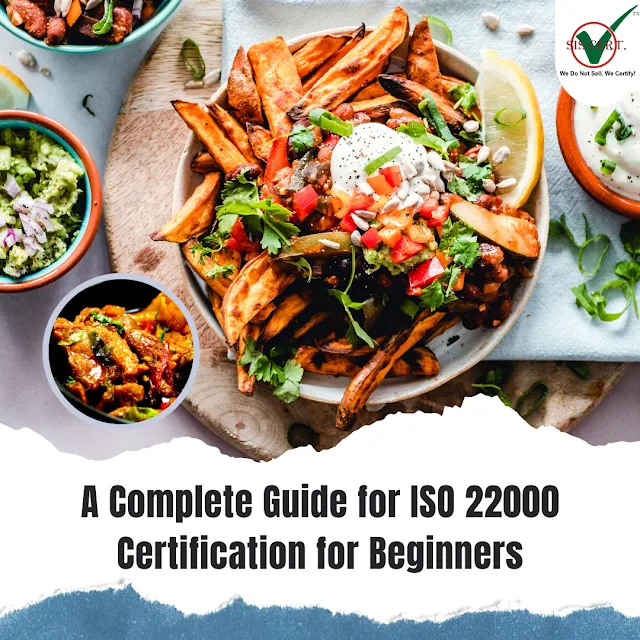A Complete Guide for ISO 22000 Certification for Beginners
 |
Understand the ISO 22000 Standard: Familiarize yourself with the ISO 22000 standard and its requirements. ISO 22000 sets out the criteria for establishing, implementing, maintaining, and continually improving a Food Safety Management System (FSMS). It provides a framework to identify and control food safety hazards, ensure legal compliance, and enhance customer satisfaction.
Conduct a Gap Analysis: Evaluate your current food safety management practices against the requirements of ISO 22000. Identify the gaps and areas that need improvement to meet the standard's requirements. This analysis will help you understand the scope of work required for certification.
Establish a Food Safety Management Team: Form a dedicated team responsible for implementing and managing the FSMS. The team should include individuals with expertise in food safety, quality management, and relevant areas of the organization. Assign roles and responsibilities to team members to ensure effective implementation.
Develop and Implement the FSMS: Develop and document the necessary policies, procedures, and processes to meet ISO 22000 requirements. This includes establishing a Food Safety Policy, conducting a Hazard Analysis, defining operational controls, establishing traceability systems, and implementing corrective actions. Ensure that the FSMS aligns with the specific operations and risks of your organization.
Train Employees: Provide training to employees on food safety practices, roles, and responsibilities within the FSMS. Ensure that employees understand the importance of their contributions to food safety and the requirements of ISO 22000. Training should be ongoing to keep employees updated on any changes or improvements in the FSMS.
Internal Audits: Conduct regular internal audits to assess the effectiveness and compliance of your FSMS. Internal audits help identify areas for improvement, ensure adherence to procedures, and verify the implementation of controls. Correct any identified non-conformities and monitor the effectiveness of corrective actions.
Management Review: Hold periodic management reviews to evaluate the performance of the FSMS. Management reviews provide an opportunity to assess the suitability, adequacy, and effectiveness of the system, review performance data, identify improvement opportunities, and allocate necessary resources.
Select an Accredited Certification Body: Choose a reputable and accredited certification body to perform the ISO 22000 certification audit. The certification body should have experience in auditing food safety management systems. Engage in discussions with potential certification bodies to understand their processes, requirements, and timelines.
External Certification Audit: The certification body will conduct an on-site audit to assess the compliance of your FSMS with ISO 22000 requirements. The audit will include document review, interviews, and observation of your food safety practices. Any non-conformities identified during the audit should be addressed through corrective actions.
Maintain and Improve the FSMS: Once certified, maintain the FSMS and continually improve its performance. Regularly review the effectiveness of the system, monitor key performance indicators, conduct internal audits, and respond to changing circumstances and emerging food safety risks.
ISO 22000 certification is a significant achievement,
demonstrating your organization's commitment to food safety and quality
management. It is important to continuously monitor and maintain compliance
with ISO 22000 requirements to ensure ongoing certification and continuous
improvement in food safety practices.


Comments
Post a Comment